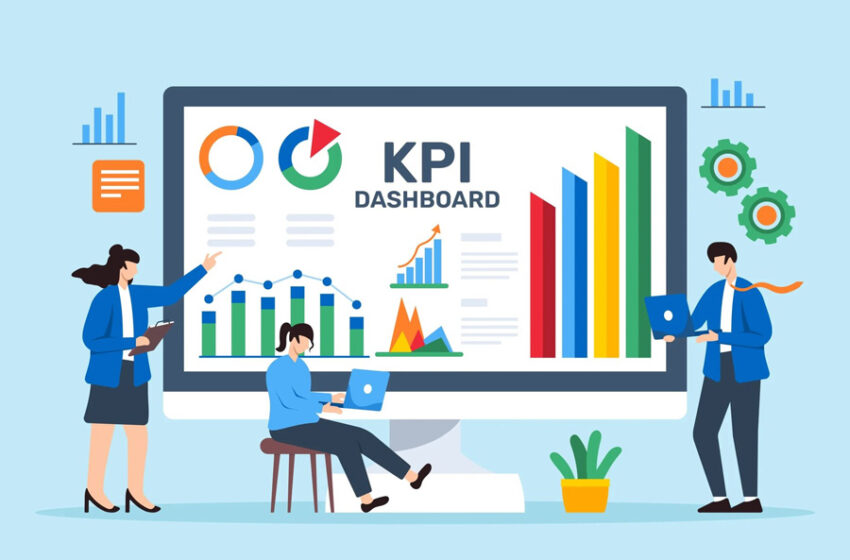KPI Dashboards in Tableau: Tracking and Visualising Business Performance Indicators
Key Performance Indicator (KPI) dashboards have become vital for businesses looking to measure success accurately and respond to real-time data insights. As one of the leading data visualisation tools, Tableau empowers enterprises to create dashboards that view KPIs, enhancing strategic decision-making. This article will discuss the importance of KPI dashboards, best design practices, and tips on leveraging Tableau’s powerful features. If you’re taking a data analyst course in Pune, learning to build effective KPI dashboards in Tableau is a valuable skill that could set you apart in data analytics.
What Are KPI Dashboards?
KPI dashboards are centralised displays that showcase a business’s essential metrics, helping decision-makers monitor, assess, and manage performance. A well-constructed dashboard provides a real-time overview of metrics like sales, customer acquisition, operational efficiency, and financial performance. For students in a data analyst course in Pune, mastering KPI dashboards can equip them to present complex data in digestible formats, making data insights actionable for business leaders.
Why Use Tableau for KPI Dashboards?
Tableau’s intuitive interface, customisable design, and advanced analytics make it a top choice for building KPI dashboards. It offers flexibility with data sources, enabling users to connect directly to databases, cloud services, and even Excel files. Tableau’s drag-and-drop functionality is particularly useful for those in a data analyst course, as it allows both novice and experienced analysts to create compelling visuals without extensive coding.
Defining the Right KPIs for Your Dashboard
Choosing relevant KPIs is the first step in building an effective dashboard. KPIs vary across industries, so understanding the business goals is crucial. For instance, a retail company might focus on metrics like sales growth, customer retention rate, and inventory turnover. Defining KPIs based on business objectives is often taught in a data analyst course to help students identify the most impactful data for analysis.
Building an Effective KPI Dashboard in Tableau
To create a dashboard that provides valuable insights, follow these steps:
Identify Your Data Sources:
Ensure data is reliable, accurate, and up-to-date.
Create Calculations for KPIs:
Use Tableau’s calculated fields to derive metrics such as profit margins, growth rates, or ratios.
Design for Clarity:
Focus on a clear, minimal design prioritising readability and ease of use.
These steps are integral for anyone in a data analyst course, as building an organised dashboard can provide quick, actionable insights that drive better business decisions.
Utilising Filters for Custom Views
Tableau allows you to add filters to your KPI dashboards, making it possible to drill down into specific data segments. Users can filter by region, period, product category, or other criteria relevant to their analysis. Filters provide users with customised insights, allowing decision-makers to understand performance at a granular level. For students in a data analyst course, learning how to apply filters effectively is essential for building versatile dashboards that cater to different stakeholders.
Leveraging Tableau’s Real-Time Data Capabilities
In fast-paced environments, real-time data is crucial. Tableau enables connections with live data sources, providing KPI dashboards that update automatically. This capability ensures businesses always have the latest insights, essential for responding to market changes swiftly. In a data analyst course, students are often taught how to manage real-time data connections, allowing for the creation of dashboards that serve as dynamic tools for monitoring business health.
Designing with Users in Mind
An effective KPI dashboard is designed with the end user in mind. Ask yourself who will use the dashboard, what data they need, and how best to present it. Keep the layout simple, using intuitive colour schemes, clear labels, and minimal visual clutter. In a data analyst course in Pune, students learn the importance of user-centred design, ensuring the dashboards they create are useful and accessible to decision-makers.
Highlighting Key Insights with Conditional Formatting
Conditional formatting in Tableau allows you to set specific colour rules based on KPI thresholds. For example, a KPI that falls below the target can be highlighted in red, while a KPI that exceeds the target could appear in green. This makes it easy for users to identify performance levels at a glance. Conditional formatting is often emphasised in a data analyst course in Pune, as it improves the readability of data visualisations and draws attention to critical metrics.
Adding Interactivity with Tooltips and Actions
Interactivity enhances a dashboard’s value by allowing users to explore data beyond the surface level. In Tableau, you can add tooltips that show detailed information when a user hovers over a KPI or data point. Additionally, actions like drill-downs allow users to click on a metric to view more detailed data. Students in a data analyst course in Pune benefit from learning these techniques, as they can create dashboards that allow deeper data exploration and insights.
Incorporating Time Series Analysis
Time-based trends are crucial for understanding long-term business performance. Tableau’s time-series analysis tools allow you to examine how KPIs change over time, helping to identify seasonality, trends, and anomalies. For instance, a sales growth metric displayed as a line graph over several years can show growth patterns or highlight specific periods of decline. In a data analyst course in Pune, learning time series analysis prepares students to provide historical insights that can inform future strategies.
Dashboard Optimisation for Performance
Performance optimisation ensures your KPI dashboard runs smoothly, even with large datasets. Use filters sparingly, limit the number of visualisations on each page, and optimise data extracts. Tableau’s “Performance Recording” tool can help identify bottlenecks and improve dashboard speed. These techniques are crucial in a data analyst course in Pune, where students learn how to create efficient, scalable, and responsive dashboards.
Publishing and Sharing Your Dashboard
Once your dashboard is complete, Tableau provides multiple ways to share it, including publishing to Tableau Server or Tableau Public. This enables team members and stakeholders to access real-time KPIs, even without installing Tableau on their computers. In a data analyst course in Pune, students gain experience in publishing dashboards, making them accessible, and ensuring effective communication of business insights.
Common Mistakes to Avoid in KPI Dashboards
Creating KPI dashboards involves avoiding certain common pitfalls:
- Overloading with Metrics: Too many KPIs can overwhelm users; select only the most critical indicators.
- Ignoring the Target Audience: Always design with the primary users in mind to ensure the dashboard meets their needs.
- Neglecting Regular Updates: Dashboards require consistent updates to reflect accurate and timely data insights.
By learning to avoid these mistakes, students in a data analyst course in Pune can ensure their dashboards remain effective tools for tracking business performance.
Conclusion:
KPI dashboards in Tableau are essential tools for tracking and visualising business performance indicators. They provide clarity, real-time insights, and the ability to measure outcomes against goals. By leveraging Tableau’s advanced features, such as real-time data connections, interactive filters, conditional formatting, and time series analysis, you can build dashboards that empower stakeholders to make informed decisions. For anyone taking a data analyst course in Pune, mastering Tableau dashboards is a valuable skill, providing the expertise to create impactful visualisations that drive business success.
Business Name: ExcelR – Data Science, Data Analytics Course Training in Pune
Address: 101 A ,1st Floor, Siddh Icon, Baner Rd, opposite Lane To Royal Enfield Showroom, beside Asian Box Restaurant, Baner, Pune, Maharashtra 411045
Phone Number: 098809 13504
Email Id: enquiry@excelr.com


